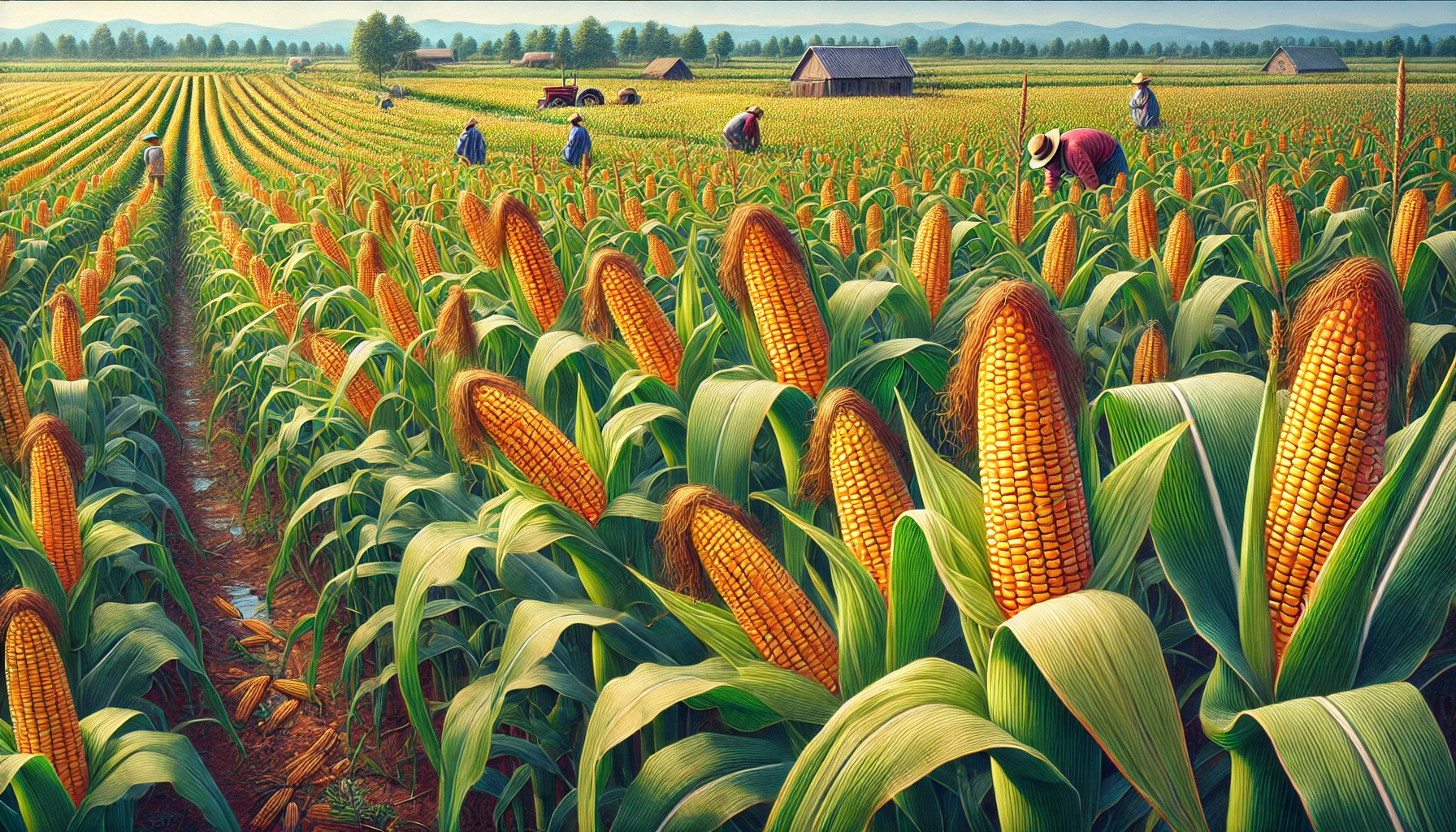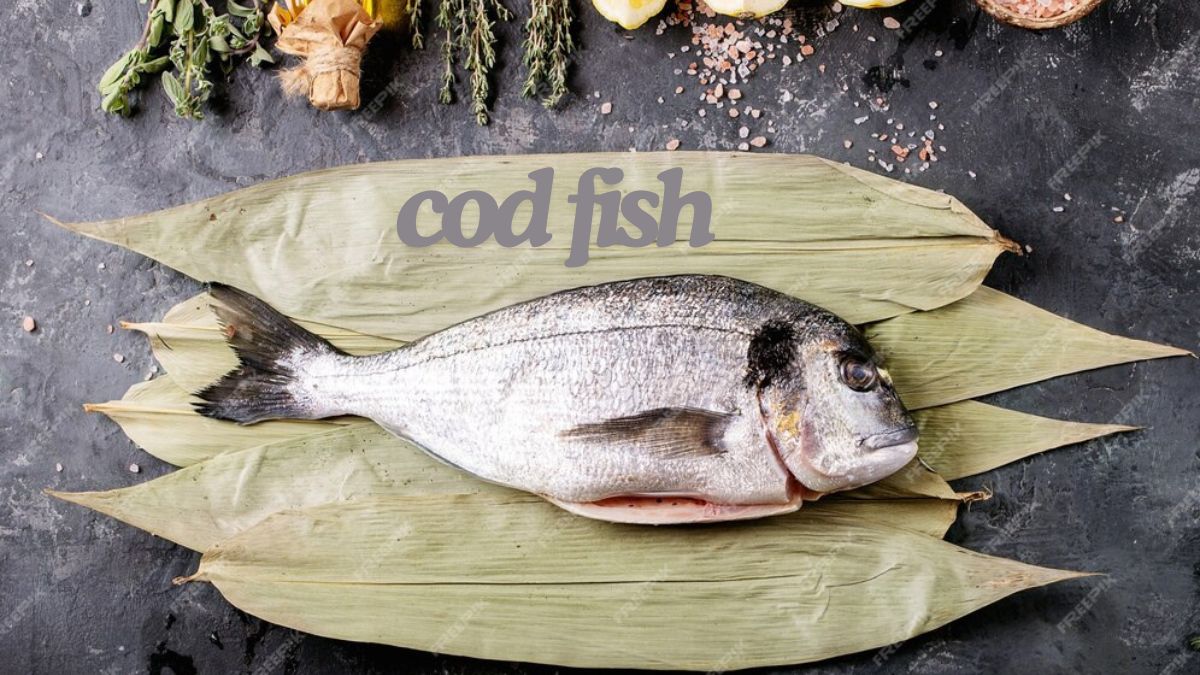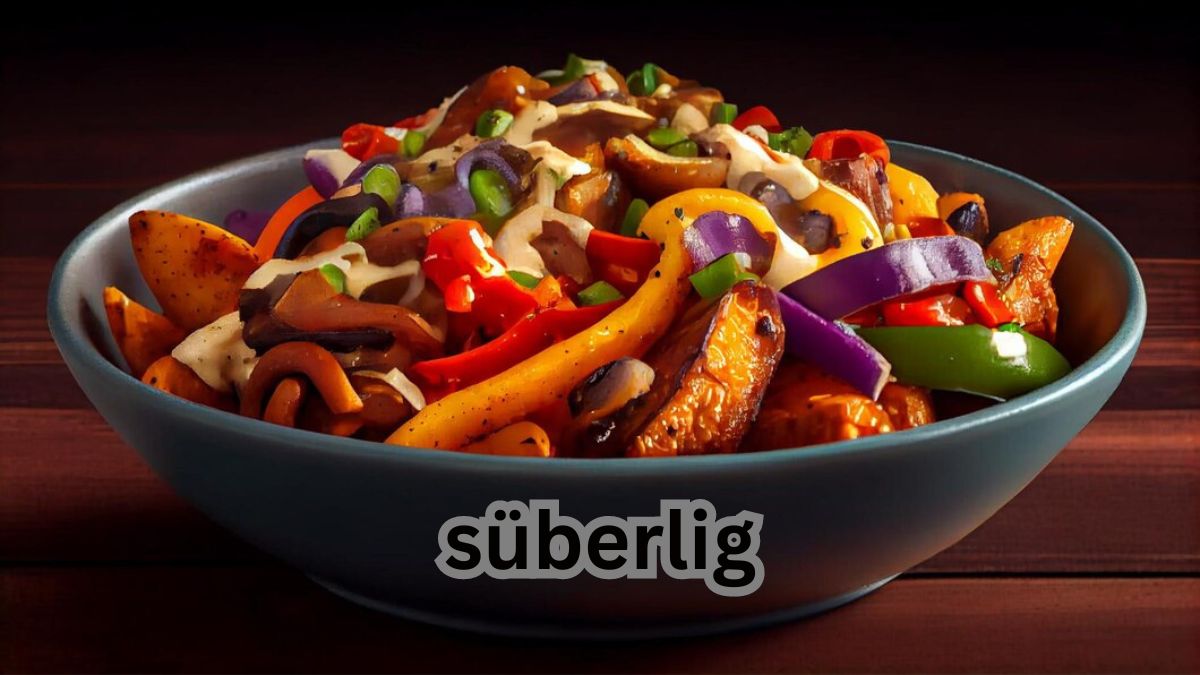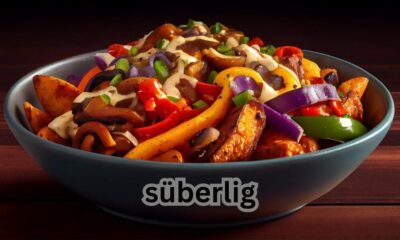FOOD
FPO Corn: Everything You Need to Know

Corn is one of the most widely grown crops in the world. From being a staple food to having industrial applications, corn is at the heart of many economies. In recent years, you might have come across the term “FPO Corn” but wondered what it’s all about. Is it just another variety of corn? Or does it represent something more? This blog will explore everything you need to know about FPO Corn—from its meaning to its importance and future potential.
What is FPO Corn?
Before diving deeper into the subject, it’s important to understand what FPO means. FPO stands for Farmer Producer Organization, a concept designed to help farmers collectively work towards better farming outcomes. FPO Corn, then, refers to the corn produced by farmers who are part of these organizations. These groups come together to enhance productivity, streamline marketing, and ensure that small farmers get fair prices for their crops.
FPOs operate under a cooperative model, where all the members (in this case, corn farmers) share resources and decision-making powers. FPO Corn is essentially the product of sustainable farming practices facilitated by these cooperatives, leading to better yields, higher profits, and more direct access to markets.
Why is FPO Corn Important?
The importance of FPO Corn extends beyond the product itself. It represents a shift in how farming is organized, especially in developing countries where small farmers often struggle to get fair prices. Through collective efforts, FPOs are able to:
- Negotiate better prices: Farmers under FPOs are not at the mercy of middlemen. They can sell directly to large buyers or even retail their products, helping them secure better prices for their produce.
- Lower production costs: By pooling resources, FPOs can bulk buy seeds, fertilizers, and equipment at lower prices, reducing individual farming costs.
- Adopt better farming practices: Since FPOs promote knowledge sharing, members are more likely to adopt sustainable and advanced farming techniques, which increases yield and lowers the environmental impact.
How is FPO Corn Different from Regular Corn?
You might be wondering how FPO Corn differs from regular corn sold in markets. The main difference lies in its production process and the business model that surrounds it. Regular corn is often grown by individual farmers, who sell their produce to wholesalers or middlemen. This traditional supply chain leaves many small farmers vulnerable to fluctuating market prices and exploitation.
On the other hand, FPO Corn is cultivated under a cooperative framework where farmers pool resources and work together to produce and sell their crops. This collective effort provides farmers with more bargaining power, allowing them to fetch higher prices and reduce dependency on intermediaries. FPO Corn is also more likely to be grown using sustainable farming practices, as FPOs often encourage eco-friendly methods and provide access to better technology and resources.
The Benefits of FPO Corn for Farmers
Now that you understand the core difference between FPO Corn and regular corn, let’s dive deeper into the benefits for farmers. Here are some key advantages:
- Higher Profits
By eliminating middlemen, FPOs ensure that farmers get more of the profit directly. Instead of selling their produce at lower prices to intermediaries, farmers can negotiate with buyers themselves, either individually or as part of a group. This increases the overall profitability of farming. - Shared Resources and Costs
One of the most significant benefits of FPOs is the pooling of resources. Farmers can access seeds, fertilizers, and machinery at lower prices by purchasing them in bulk. Additionally, this cooperative approach allows small farmers to adopt expensive technologies like drip irrigation systems or combine harvesters, which they might not be able to afford on their own. - Access to Better Markets
FPOs empower farmers by giving them direct access to larger markets. Many FPOs negotiate directly with retailers or large food manufacturers, ensuring that their members can sell their produce at competitive prices. Some FPOs even explore opportunities for export, opening up new revenue streams for local farmers. - Training and Development
FPOs are not just about collective selling. They also emphasize training and education. Members get access to workshops and seminars on modern farming techniques, pest control, and organic farming. This improves productivity and the quality of the produce.
FPO Corn: A Path to Sustainable Farming?
In today’s world, sustainable farming is more important than ever. FPO Corn has the potential to lead the way in eco-friendly agriculture. FPOs often advocate for practices that protect the environment, such as:
- Reduced pesticide usage: FPOs educate farmers about integrated pest management, which reduces the reliance on harmful chemicals.
- Water conservation: Through shared resources, farmers can adopt irrigation technologies that conserve water, such as drip or sprinkler systems.
- Soil health: Many FPOs emphasize the importance of maintaining soil health through crop rotation, organic farming, and the use of compost.
By encouraging these practices, FPO Corn could become a model for sustainable farming, helping both the environment and the farmers involved.
How Does FPO Corn Impact Consumers?
It’s easy to assume that the benefits of FPO Corn are limited to the farmers, but that’s not the case. As a consumer, there are several advantages to choosing FPO Corn:
- Higher Quality
Since FPOs promote better farming practices, the quality of FPO Corn is often superior to that of regular corn. Whether you’re buying fresh corn or corn products, you can expect a higher standard of taste and nutrition. - Ethically Produced
By choosing FPO Corn, you are supporting a fair and ethical supply chain. You’re helping small farmers earn a better livelihood, reducing their exploitation by intermediaries. - Environmentally Friendly
FPOs typically encourage eco-friendly practices, which means that FPO Corn is more likely to be produced with minimal environmental impact. By choosing FPO Corn, you’re making a more sustainable choice.
The Future of FPO Corn
With growing global interest in sustainable agriculture and ethical food production, Corn is set to gain even more prominence in the future. Governments and international organizations are increasingly supporting FPOs, recognizing their potential to transform the agricultural sector. As more farmers join FPOs and adopt better farming practices, we can expect the quality, availability, and impact of Corn to continue improving.
Moreover, consumers are becoming more conscious of the products they buy and the processes behind them. As demand for ethically produced, high-quality food grows, Corn has the potential to become a preferred choice for consumers who care about the origin and impact of their food.
Final Thoughts
FPO Corn represents more than just a product; it symbolizes a transformation in how farming is organized, particularly for small farmers. It offers numerous benefits, including higher profits, better access to markets, and sustainable farming practices. For consumers, Corn provides an opportunity to choose high-quality, ethically produced, and environmentally friendly food.
As the movement continues to gain momentum, both farmers and consumers stand to benefit from the growth of FPO Corn. If you’re looking for a more sustainable and ethical option in your diet, FPO Corn is definitely worth considering.
Conclusion
In conclusion, Corn is an exciting development in agriculture that is helping to create a more sustainable and fairer system for farmers. By supporting Corn, you’re not just buying a product—you’re investing in a movement that values sustainability, ethical production, and farmer empowerment.
FAQs
What does Corn mean?
Corn refers to corn produced by members of Farmer Producer Organizations (FPOs), which are cooperatives of farmers who pool resources to improve productivity, negotiate better prices, and practice sustainable farming.
How is Corn different from regular corn?
FPO Corn is grown under a cooperative model, ensuring better market access, higher prices for farmers, and often more sustainable farming practices, compared to regular corn sold through traditional supply chains.
Why is Corn important for farmers?
FPO Corn helps farmers by reducing their reliance on middlemen, allowing them to sell directly to markets, lowering production costs through shared resources, and promoting better farming techniques.
Is Corn more environmentally friendly?
Yes, FPOs often promote sustainable practices like reduced pesticide use, water conservation, and soil health management, making Corn more eco-friendly.
How can consumers benefit from choosing Corn?
Consumers can enjoy higher-quality, ethically produced, and environmentally responsible corn while supporting small farmers who receive fair compensation.
FOOD
Cod Fish: A Comprehensive Guide

Among the many varieties of fish used in cooking, cod is among the most popular. It is a staple in many kitchens throughout the world because to its mild flavor and flaky texture. Cod fish is delicious, but it also has major economic implications, particularly in areas where fishing is the only source of income.
History of Cod Fishing
The old coastal towns laid the groundwork for cod fishing, which has a history that spans millennia. Northern Europeans and North Americans rely heavily on cod as a staple diet. The economic growth of many coastal communities may be traced back to the history of cod fishing benefits, which is intricately linked to marine exploration and commerce.
Atlantic Cod
Where Cod Fishing Came From
Geographically, the North Atlantic is where you are most likely to see Atlantic cod, whose scientific name is Gadus morhua. It has been an essential part of the fishing business for generations and is the most famous kind of cod.
Pacific Cod
The North Pacific is home to the Pacific cod, scientifically known as Gadus macrocephalus. Pacific fish is quite similar to Atlantic cod, with the exception that it is often smaller and leaner.
Differences and Similarities
The two varieties are similar in texture and flavor, but they’re different in size, habitat, and fat content. Many people like Atlantic cod because it has a somewhat deeper flavor.
Habitat and Distribution
Cod fish, which thrive in cold, deep waters, are found all around the planet. North Atlantic and North Pacific waters are their most common habitats. There are many of food supplies and good places to spawn in these areas, making them perfect for cod to thrive.
Life Cycle of Cod Fish
The life cycle of a codfish is quite intriguing. The winter and early spring are the most common times for spawning. fish males fertilize the millions of eggs released by female fish. Larvae develop from these eggs and then float along with the currents until they reach maturity.
Growth Stages
Before they reach maturity, cod fish go through a series of development phases. Cod begin their lives as larvae, develop into juveniles, and then reach sexual maturity and the ability to spawn as adults. Depending on the surrounding environment, this life cycle could take a number of years.
FOOD
Unveiling the Beauty of Tamisie: A Guide to this Exquisite Fabric

Welcome to the world of Tamisie, a fabric that weaves together history, culture, and culinary delights in a tapestry of exquisite flavors and textures. Originating from ancient traditions and evolving into a modern-day culinary masterpiece, Tamisie holds a special place in the hearts of food enthusiasts around the globe. Join us on a journey as we unveil the beauty of Tamisie, exploring its origins, key influences, regional variations, health benefits, and so much more. Get ready to discover why Tamisie is not just a fabric but an experience waiting to be savored!
Origins of Tamisie
Tamisie, a delicacy rooted in rich history, traces its origins back to ancient civilizations. Originally crafted by skilled artisans using age-old techniques, this exquisite fabric has stood the test of time. With a legacy steeped in tradition and craftsmanship, tamisie continues to captivate hearts around the world with its timeless beauty and allure.
Evolution Over Time
Tamisie has a rich history that dates back centuries, evolving over time to become the exquisite fabric we know today. From its early origins to modern innovations, tamisie has adapted and transformed, influenced by changing trends and cultural shifts. Its journey showcases the resilience and versatility of this timeless fabric.
Key Influences
Tamisie’s rich history is shaped by diverse cultures, including Indian, Middle Eastern, and Mediterranean. Each influence brings unique flavors and techniques to the fabric’s creation, resulting in a tapestry of tastes that have stood the test of time.
Core Ingredients
Tamisie, known for its unique texture and flavor, is crafted from a blend of high-quality ingredients. The core components typically include finely ground grains or legumes, water, and sometimes additional seasonings or oils. These key ingredients come together to create the distinct taste and mouthfeel that make tamisie a beloved culinary staple across different regions.
Regional Variations
Tamisie boasts a rich tapestry of regional variations, each offering a unique twist to this exquisite fabric. From the delicate nuances in texture and flavor profiles to the distinct techniques used in its preparation, these regional differences add depth and diversity to the culinary world’s love affair with tamisie.
Traditional Methods
Traditional methods of producing Tamisie involve hand-weaving techniques passed down through generations. Skilled artisans meticulously create intricate patterns using traditional looms and natural dyes, resulting in unique and high-quality fabrics. This time-honored approach ensures the authenticity and craftsmanship that defines Tamisie as a beloved textile choice worldwide.
Modern Innovations
Tamisie has seen a wave of modern innovations in recent years, with chefs and food enthusiasts experimenting with new techniques to elevate this traditional fabric. From incorporating unique flavors to exploring alternative production methods, the evolution of tamisie continues to push boundaries and delight taste buds around the world.
Health Benefits
Tamisie comes with a host of health benefits, making it not just delicious but also nutritious. Packed with vitamins and minerals, this fabric is known to boost immunity, improve digestion, and promote overall well-being. Its high fiber content aids in weight management and supports heart health. Incorporating tamisie into your diet can be a smart choice for a healthier lifestyle.
Dietary Considerations
When it comes to dietary considerations, tamisie is a versatile fabric that can easily fit into various diets. It is naturally gluten-free and low in calories, making it an excellent choice for those looking to maintain a healthy lifestyle. Additionally, its high fiber content can help promote digestion and keep you feeling full longer.
Presentation Tips
When it comes to presenting Tamisie, simplicity is key. Showcasing the delicate texture and subtle flavors of this exquisite fabric can be done by serving it on elegant platters or in beautiful bowls. Garnishing with fresh herbs or a drizzle of olive oil can enhance its visual appeal and elevate the dining experience.
Common Mistakes to Avoid
When working with tamisie’s, it’s essential to avoid overcooking the fabric as it can result in a mushy texture. Another common mistake is using too much water, which dilutes the flavors and can make the dish bland. Be mindful of seasoning; adding salt too early can lead to an overly salty final product.
Classic Tamisie Recipe
The classic Tamisie recipe is a timeless favorite that showcases the delicate flavors and textures of this exquisite fabric. Typically made with a blend of traditional ingredients, this dish offers a harmonious balance of savory and sweet notes that are sure to tantalize your taste buds. Whether enjoyed on its own or paired with other dishes, the classic Tamisie recipe is a must-try for any culinary enthusiast.
Vegetarian/Vegan Versions
For those following a vegetarian or vegan diet, tamisie offers a versatile option. By substituting animal-based ingredients with plant-based alternatives, such as tofu or tempeh, you can create delicious and nutritious dishes without compromising on taste. Experiment with different vegetables and seasonings to customize your tamisie’s experience to suit your dietary preferences.
Tamisie in Pop Culture
Tamisie has made its mark in pop culture through various references in movies, TV shows, and music. Its presence in popular culture continues to elevate its status as a coveted ingredient both on-screen and off-screen.
Global Reach
Tamisie has gained popularity worldwide, reaching far beyond its traditional origins. From Asia to Europe and the Americas, this exquisite fabric has captured the attention of chefs and food enthusiasts globally. Its versatility in various cuisines makes it a sought-after ingredient in kitchens around the world, showcasing its wide-reaching appeal and adaptability.
Chef Interviews
Discover the insights and expertise of renowned chefs as they share their experiences with tamisie’s. Get an exclusive look into their creative processes, favorite recipes, and tips for incorporating this exquisite fabric into culinary masterpieces. Stay tuned for behind-the-scenes stories and inspiration from the experts in the kitchen!
Culinary Trends Involving Tamisie
Culinary trends involving Tamisie have been on the rise in recent years, with chefs and home cooks alike experimenting with this versatile fabric. From using it as a gluten-free alternative to incorporating it into fusion dishes, Tamisie is making waves in the culinary world. Stay tuned for innovative recipes and exciting creations featuring this exquisite ingredient!
Home Cook Experiences
Home cooks around the world have embraced tamisie’s in their kitchens, experimenting with various recipes and techniques to incorporate this exquisite fabric into their culinary creations. From traditional dishes passed down through generations to innovative fusion recipes, home cooks continue to explore the versatility of tamisie’s as a key ingredient that adds depth and flavor to a wide range of dishes.
Street Food Variations
Street food vendors around the world have put their own unique spin on tamisie, creating a plethora of delicious variations. From savory stuffed tamisie’ pockets to crispy fried tamisie’s sticks, street food enthusiasts can explore a range of flavors and textures that showcase the versatility of this exquisite fabric in diverse culinary settings.
Challenges and Solutions
Navigating the world of tamisie’s comes with its own set of challenges. From sourcing authentic ingredients to mastering traditional cooking techniques, there are hurdles to overcome. However, with creativity and innovation, solutions can be found. Experimenting with flavors and textures can lead to exciting new ways to enjoy this exquisite fabric in culinary creations.
Influence of Technology
Technology has revolutionized the production and distribution of tamisie’s. From automated weaving machines to online platforms for global sales, technology has streamlined processes and expanded reach. Digital tools have also enabled chefs to experiment with new recipes and techniques, keeping this traditional fabric relevant in a modern culinary landscape.
Predicted Developments
As we look towards the future, predicted developments suggest that tamisie’s will continue to gain popularity worldwide. With a growing focus on health-conscious eating and sustainable food practices, this exquisite fabric is expected to be embraced by even more chefs and home cooks in innovative ways. Stay tuned for exciting new recipes and culinary creations featuring tamisie!
Conclusion
As we uncover the intricate beauty of Tamisie’s, it becomes evident that this exquisite fabric holds a rich history, diverse regional variations, and versatile culinary uses. From its traditional methods to modern innovations, Tamisie continues to captivate chefs and food enthusiasts worldwide. The future of Tamisie is promising as it intertwines tradition with innovation in the culinary world.
FAQs
What is Tamisie made of?
Tamisie is traditionally made from a blend of organic whole grains such as wheat, barley, and millet.
Is Tamisie gluten-free?
No, Tamisie contains gluten due to the use of whole grains in its composition.
Can I incorporate Tamisie into my diet if I have gluten sensitivities?
It’s advisable to consult with a healthcare provider before adding Tamisie to your diet if you have gluten sensitivities or celiac disease.
How can I store Tamisie’s properly?
To maintain freshness, store Tamisie’s in an airtight container in a cool, dry place away from direct sunlight.
Are there any specific health benefits associated with consuming Tamisie?
Yes! Due to its whole grain content, tamise’s may help improve digestion and provide essential nutrients like fiber and minerals beneficial for overall health.
FOOD
Exploring the Benefits of süberlig: A Comprehensive Guide

Welcome to a delicious journey through the world of süberlig, a culinary gem that bridges tradition and innovation in every bite. From traditional family recipes passed down through generations to modern interpretations bursting with creativity, süberlig offers a diverse range of flavors and textures that will tantalize your taste buds. Join us as we explore the rich history, regional variations, nutritional benefits, and cultural significance of süberlig in this comprehensive guide. Get ready to discover why süberlig has captured the hearts (and stomachs) of food enthusiasts around the globe!
Traditional and Modern Recipes
Discover the rich heritage of süberlig through traditional recipes passed down through generations. Explore modern twists on classic dishes that showcase innovation while honoring the essence of this beloved culinary tradition.
Preparation Techniques
Discover the diverse preparation techniques of süberlig, from traditional methods passed down through generations to modern innovations. Explore the art of cooking this beloved dish with unique flavors and textures that make it a culinary delight.
Regional Variations
Regional variations in süberlig showcase diverse culinary traditions. Each region adds its unique twist, from spice blends to cooking methods, creating a rich tapestry of flavors and textures.
Blending Tradition and Innovation
Blending tradition and innovation in the culinary world is key to keeping cultural heritage alive while embracing new techniques and flavors. It’s a delicate balance that allows for creativity without losing sight of authentic roots.
The Role of Ingredients
The role of ingredients in süberlig is crucial, as they contribute to the unique flavors and textures of this dish. From fresh herbs to quality meats, each ingredient plays a significant part in creating the perfect balance of taste.
Nutritional Value
Süberlig boasts a high nutritional value, rich in vitamins and minerals. This traditional dish provides essential nutrients for a balanced diet, making it a healthy option to incorporate into your meals.
Potential Health Benefits
Süberlig offers potential health benefits due to its nutrient-rich ingredients like vegetables and lean proteins. With high fiber content, vitamins, and antioxidants, it can support digestion, boost immunity, and promote overall well-being.
Incorporating Süberlig into a Healthy Diet
Incorporating Süberlig into a healthy diet can add a nutritious and flavorful element to your meals. With its high fiber content, vitamins, and minerals, süberlig is a great addition for those looking to boost their overall wellness.
Dietary Adaptations
As dietary preferences evolve, süberlig has adapted to various lifestyles. From vegan and gluten-free versions to incorporating superfoods, there are endless ways to enjoy this versatile dish while catering to individual needs.
Representation in Art and Literature
Süberlig has been a recurring theme in art and literature, symbolizing tradition, cultural identity, and culinary heritage. From paintings to poems, its presence showcases the significance of food in human expression.
Modern Interpretations
Modern interpretations of süberlig have taken the traditional dish to new heights, incorporating innovative flavors and techniques. Chefs around the world are experimenting with fusion cuisine to create unique and exciting dishes that pay homage to this cherished culinary tradition.
Media Presence
Süberlig has garnered attention in the media for its unique flavors and cultural significance. From television cooking shows to social media influencers, süberlig is making its mark on the culinary scene worldwide.
Symbolism and Modern Usage
Süberlig holds symbolic significance in various cultures, representing unity and abundance. In modern times, it’s used to celebrate cultural heritage and promote sustainability through its versatile culinary applications.
Global Influence
Süberlig’s global influence has transcended borders, captivating taste buds worldwide. From Asia to Europe, its rich flavors and diverse recipes have made it a sought-after culinary delight, showcasing the beauty of cultural exchange through food.
Environmental Impact
Süberlig has a positive environmental impact due to sustainable agricultural practices, conservation of culinary traditions, and reducing food waste. Supporting local economies and promoting eco-friendly cooking techniques are key aspects of its global influence.
Agricultural Practices
Süberlig’s agricultural practices emphasize sustainable farming methods, promoting biodiversity and soil health. Farmers prioritize organic cultivation techniques to preserve the environment and ensure high-quality ingredients for traditional recipes.
Conservation of Culinary Traditions
Conservation of culinary traditions is vital to preserving cultural heritage. By passing down recipes and cooking techniques, we ensure that unique flavors and practices are not lost to time.
Reducing Food Waste
Reducing food waste is crucial for sustainability. Süberlig can be used creatively to minimize leftovers. By utilizing every part of the ingredients, we contribute to a more eco-friendly culinary practice.
Sustainable Cooking Techniques
Sustainable cooking techniques focus on minimizing waste, conserving energy, and utilizing locally sourced ingredients. Methods like composting food scraps, using energy-efficient appliances, and supporting ethical farming practices contribute to a more eco-friendly culinary experience.
Supporting Local Economies
Supporting local economies through the consumption of süberlig plays a vital role in sustaining small-scale producers and artisans. By purchasing locally sourced ingredients, you contribute to the economic growth of communities and help preserve culinary traditions.
Conservation Initiatives
Conservation initiatives for süberlig focus on preserving culinary traditions, reducing food waste, and supporting local economies. These efforts aim to ensure the sustainable production and consumption of this beloved dish.
Education and Awareness
Education and awareness play a vital role in promoting the cultural significance of süberlig. By educating people about its history, ingredients, and preparation techniques, we can ensure its legacy is preserved for future generations.
Adapting to Modern Needs
Adapting to modern needs, süberlig recipes have evolved to cater to busy lifestyles. Quick and easy variations accommodate time constraints without compromising on flavor or nutrition. Embracing innovation ensures the tradition stays relevant in today’s fast-paced world.
Interactive Dining
Imagine a dining experience where you can engage with the chefs, customize your meal, and even learn cooking techniques. Interactive dining adds a fun and personalized touch to traditional culinary encounters.
Creative Presentation
When it comes to süberlig, creative presentation plays a vital role in enhancing the dining experience. From intricate plating designs to innovative serving methods, each dish tells a unique story through its visual appeal.
Personalized Service
Personalized service in süberlig dining enhances the overall experience by catering to individual preferences and dietary needs. From customizing ingredients to adjusting spice levels, this attention to detail ensures a memorable culinary journey for each guest.
Cultural Festivals and Events
Cultural festivals and events celebrate the rich heritage of süberlig through culinary delights, music, dance, and art. These gatherings showcase traditional recipes and modern interpretations while fostering a sense of community and cultural exchange.
Culinary Workshops
Culinary workshops offer hands-on experiences to learn süberlig recipes from expert chefs. Participants can explore techniques, ingredients, and cultural significance in a fun and interactive setting.
At-Home Cooking
At-home cooking with süberlig allows you to immerse yourself in the culinary tradition. Experiment with recipes, savor the flavors, and enjoy the process of creating delicious dishes right in your own kitchen.
Culinary Tourism
Culinary tourism offers a unique way to explore local cultures through food. Travelers can immerse themselves in authentic culinary experiences, from street food markets to cooking classes with local chefs.
Health and Wellness
Süberlig offers a range of health benefits, from being rich in vitamins and minerals to aiding digestion. Its nutritional profile contributes to overall wellness, making it a valuable addition to a balanced diet.
Conclusion
As we wrap up our exploration of süberlig, it’s clear that this versatile ingredient holds a special place in culinary traditions worldwide. From its nutritional benefits to its cultural significance, süberlig offers a rich and diverse culinary experience for all to enjoy.
FAQs
What is süberlig?
Süberlig is a versatile culinary delight that combines traditional recipes with modern interpretations, offering a rich cultural experience through its diverse flavors and regional variations.
How can I incorporate süberlig into my diet?
You can easily incorporate süberlig into your diet by exploring different preparation techniques, experimenting with ingredients, and adapting recipes to suit your dietary preferences while enjoying the nutritional benefits it offers.
What are the potential health benefits of süberlig?
Süberlig is not only delicious but also packed with essential nutrients like vitamins, minerals, and antioxidants that support overall health and well-being when consumed as part of a balanced diet.
How does süberlig’s contribute to sustainability?
Through sustainable agricultural practices, conservation initiatives, and efforts to reduce food waste, the production and consumption of süberlig play a vital role in supporting local economies while preserving culinary traditions for future generations.
Where can I experience interactive dining or culinary workshops featuring süberlig?
You can immerse yourself in the world of süberlig by attending cultural festivals, culinary events, workshops led by skilled chefs or even trying at-home cooking sessions where you can explore creative presentations and personalized services tailored to your taste preferences.

 CRYPTO3 months ago
CRYPTO3 months agoCrypto-Engine.Pro Blog: Your Go-To Source for Crypto Trading Insights

 GENERAL3 weeks ago
GENERAL3 weeks agoUnderstanding TNA Board: A Comprehensive Guide for Beginners

 GENERAL4 months ago
GENERAL4 months agoEverything You Need to Know About NSFW411: The Ultimate Guide

 ENTERTAINMENT4 months ago
ENTERTAINMENT4 months agoExploring Mywape: Your Guide to Quality Vaping

 FOOD5 months ago
FOOD5 months agoExploring the Benefits of süberlig: A Comprehensive Guide

 BLOG4 months ago
BLOG4 months agoDiscover the Secrets Behind the /vital-mag.net blog: A Closer Look at the Popular Blog

 FOOD5 months ago
FOOD5 months agoUnveiling the Beauty of Tamisie: A Guide to this Exquisite Fabric

 ENTERTAINMENT4 months ago
ENTERTAINMENT4 months agoNavigating Erome: Tips and Tricks for a Safer Experience on Adult Platforms





















